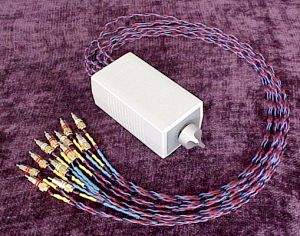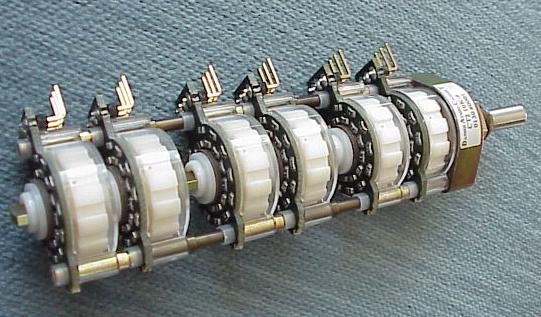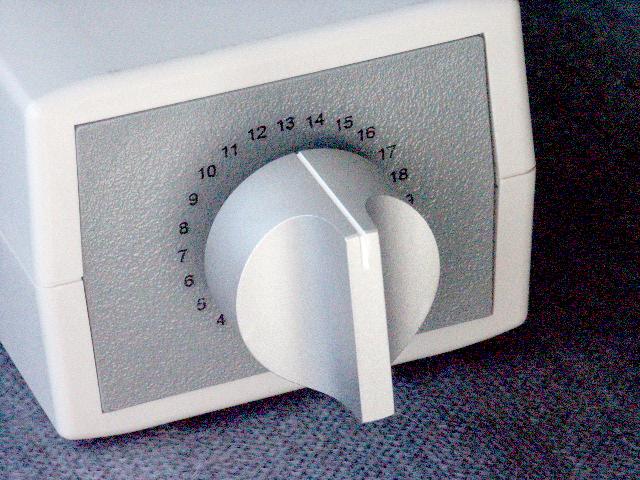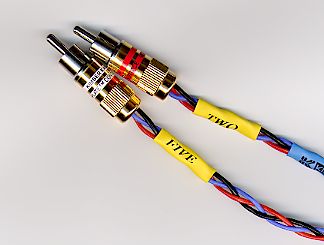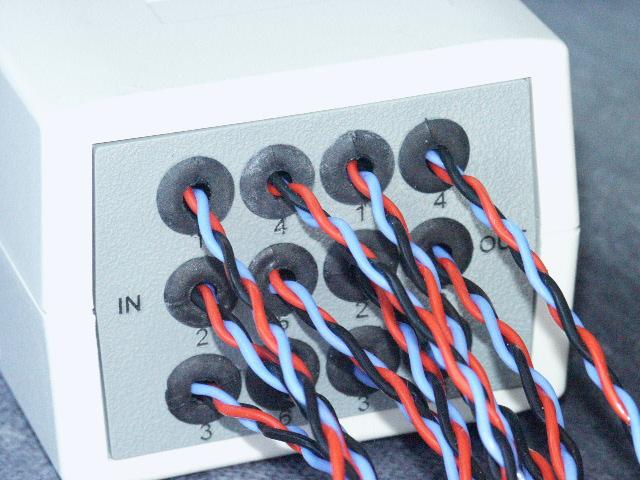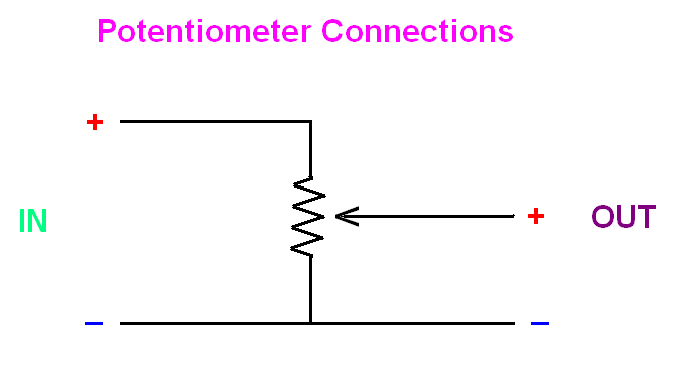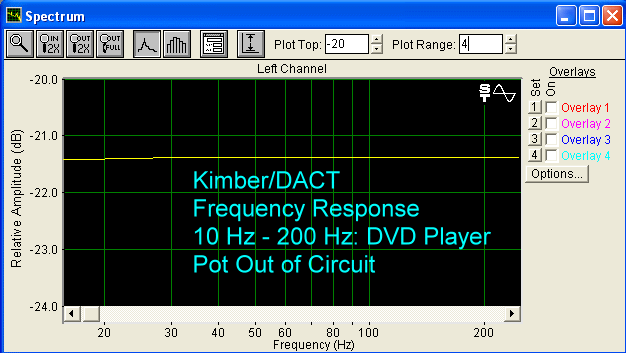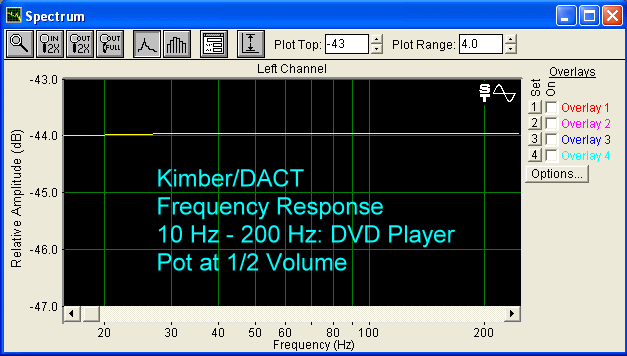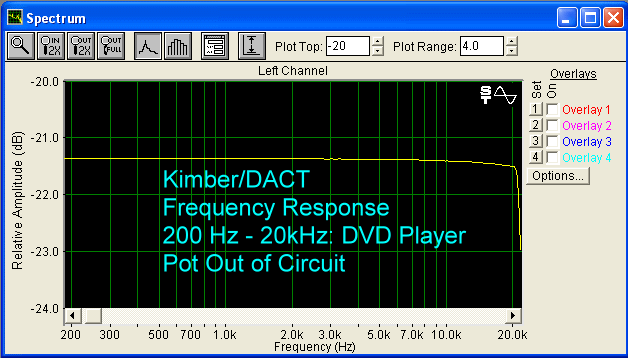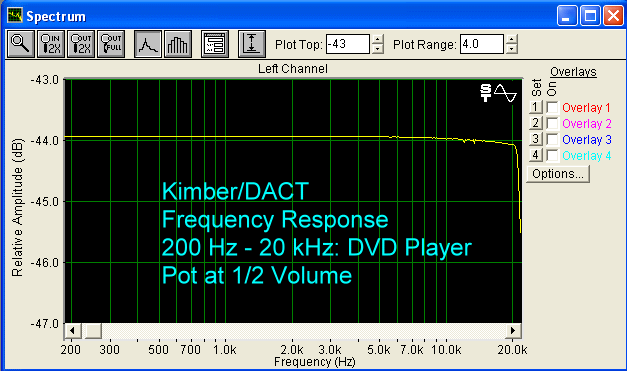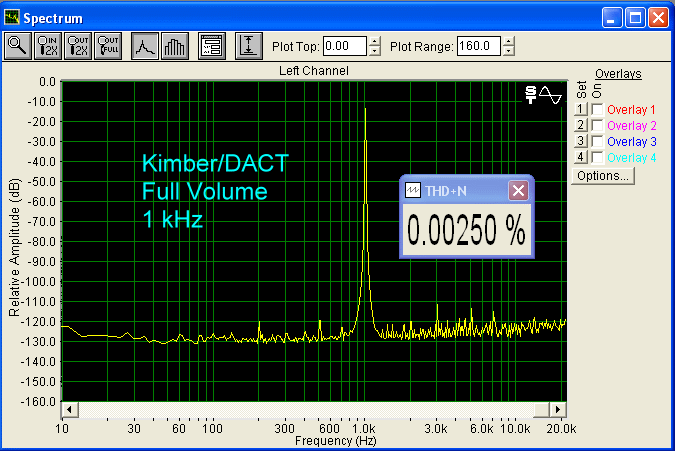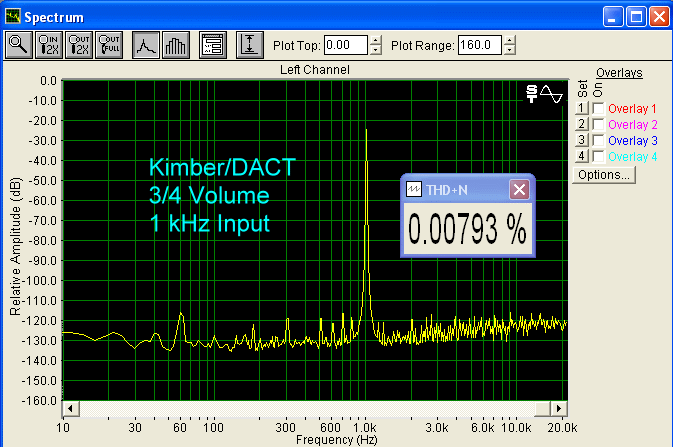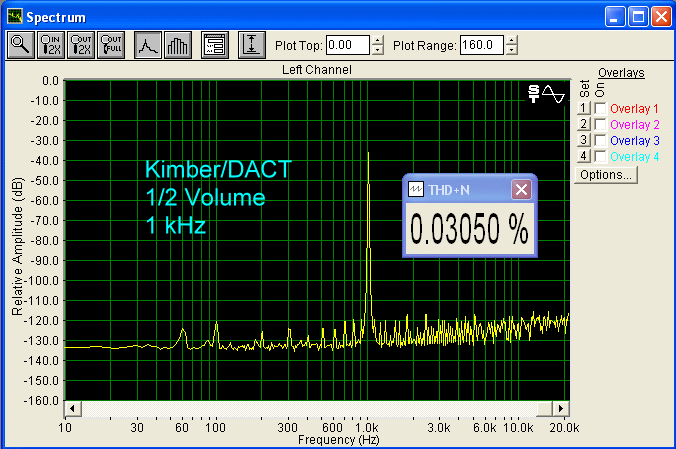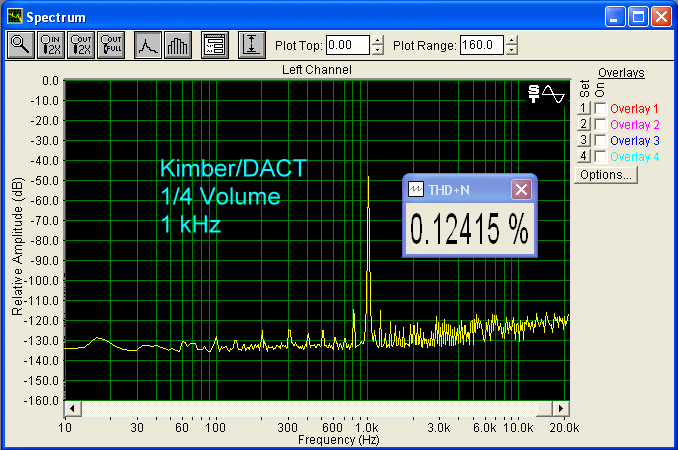|
||||||||||||
|
Introduction Unfortunately, that is not what is happening. For whatever reason, be it copyright protection or other, we still do not have a standardized way of getting all formats to our surround sound processor with one set of connections. DD and DTS can go digital between player and processor, but DVD-A and SACD must go with a set of 5.1 analog connections from the player to a set of 5.1 analog inputs on the processor. This is so frustrating, I decided to run an experiment, by building a six channel passive volume control (technically a passive preamplifier) that could be connected from the 5.1 analog output jacks on a DVD player, directly to five power amplifiers driving a surround sound speaker set, and one powered subwoofer. I wanted it to be simple, easy to build, and have a minimum amount of circuit in the signal path, including wires, connectors, and whatever else had to be in there. Although this unit could be built for just a few dollars using a basic and very inexpensive pot, along with home made interconnects, I decided that for this initial experiment, to use top grade parts. DACT (Danish Audio ConnecT - http://www.dact.com) and Kimber Kable (http://www.kimberkable.com) very kindly not only offered to supply the parts, but Ray Kimber offered to build the box containing everything. The potentiometer I selected is a DACT CT1 (now called the CT2), which has six gangs all on one spindle (photo below).
This pot is stepped, meaning that it has 24 individual resistors on each gang, and turning the volume control spindle adds or subtracts resistance. The maximum resistance is 10 kOhms, which is standard for volume controls. The pot serves as a voltage divider. You can think of a voltage divider network as a series of resistors from the + output to ground, in essence providing a load. The voltage between the ends of this series will be 100% of the output voltage driving it. What the stepper or pot does is connect the output + to various points on the resistor series, so that the output + to ground voltage is a divided section of the whole series, with the remainder of the voltage going to the output connectors. In other words, a variable amount of the signal is bled to ground, depending on how far the volume control is rotated, and the rest goes on to drive the input of the power amplifier.
Ray Kimber and I discussed the models of interconnect cables that we might use, and we settled on the Kimber PBJ, which has been one of my favorites for many years. It is beautifully made, uses Teflon dielectric, is relatively inexpensive, and sounds great. Ray built the box himself, soldering the PBJ leads directly to the prongs on the potentiometer, and running the other end of the leads out of the rear of the box. The box was made of plastic, and can be purchased at most electronic supply stores. Ray added a knob on the front, along with numbering the steps.
Each incoming interconnect was 1 meter in length, as was each outgoing interconnect, so the signal path consisted of one RCA - 1 meter of interconnect - one wiper contacting the resistor - 1 meter of interconnect - one RCA. The entire unit, when finished, only weighed a couple of pounds. The leads were not only numbered on the rear of the box, but each one was numbered at the RCA plug, so as to make it simple for connection. For example, it was 1 In, 1 Out, 1 In, 2 Out, etc.
Here is a schematic of the potentiometer connections. In this case, the blue and black wires on the PBJs were connected together as the ground (-).
I connected the Kimber/DACT box to a McIntosh MVP-851 DVD Player that has DVD-A capability. I used the 5.1 analog jacks on this player, connected to the Kimber/DACT, and then directly to a five-channel power amplifier (Rotel RMB-1095) that has 200 watts per channel into 8 Ohms. The sixth gang was connected to the line-in on a Velodyne HGS-18 subwoofer. A variety of speakers were used. The Sound First, let's talk a bit about what a preamplifier does. (1) It switches sources. So, if you have a VCR, TV, and DVD player, it lets you connect your audio system to any of these sources. Since I only use my surround sound system for watching DVD movies, this was not an issue. I could leave the Kimber/DACT connected to my DVD player all the time. (2) It amplifies weak signals (100mV) to levels (1V - 10V) necessary to drive power amplifiers. This was important back when we used turntables and the phono cartridge had low output. Today's sources produce 1V or more. (3) It keeps the output impedance constant and low, regardless of the volume setting. This is where I was a bit nervous about the project. The impedance that the power amplifier "saw" would vary up to 10 kOhms depending on the volume setting, and most output impedances of sources are only a few hundred Ohms. Frankly, I was expecting to have a large attenuation of high frequencies, so I was pleasantly surprised when that did not happen. The sound was very smooth in all channels and very clean. There was no hiss, but I could detect a little hum at the highest volume. This was probably just residual noise from the player when amplified to the loudest level. The high output impedance of the attenuator that the input of the amplifier "sees" is relevant if the load that the attenuator "sees" has a significant capacitive component. In other words, if the capacitance of the cables, or the capacitance of the amplifier input is significant enough that the impedance drop seen by the attenuator lowers substantially at higher frequencies, it will drop more voltage as the destination impedance drops, and thus roll-off higher frequencies. If the cables aren't very capacitive per distance, and kept short on top, this should not be an issue. Some amplifiers, notably tube units, often have capacitive inputs, in which case you'd need a buffer stage following the attenuator to avoid this. The overall volume was plentiful, and just a little too loud for my tastes at the highest setting. I ended up using a level at just above midway on the potentiometer. The blend between the various channels was remarkable. They seemed very much like one package rather than five individual speakers. I suspect this was because of the minimal signal path. There is definitely something to keeping it short. The best part was that I did not have to push any buttons or worry that I did not have the correct settings, or correct jacks, on a processor. The McIntosh played all the discs, including movies with DD and DTS soundtracks, DTS CDs, and DVD-As, through the 5.1 analog output jacks, into the pot, and into the power amplifiers. The darn thing just worked, no matter what I put in the player. You can, of course, build the unit with individual single-gang potentiometers, so that you can have more control over each channel. However, this raises the cost and complexity. The present review focuses on simplicity. The cables could very well end up being the most expensive part of the unit, but you need interconnects whether you use a processor or a passive volume control anyway. You can build this project as cheaply or as expensively as you wish. The sound was not as full-bodied as what I get from my processor (Theta Casablanca), seeming a bit thin. I thought perhaps this might be due to a loss in bass, so I put the Kimber/DACT on the bench. The Bench Tests A frequency response test showed that the Kimber/DACT had a flat frequency response that did not change from the response obtained when the DVD player was connected directly to the sound card. So, at this level, the thinner sound of the Kimber/DACT, compared to the processor, is unexplained. There may be more harmonics generated during processing and active preamplification. Or perhaps, there are other factors, such as the presence or absence of capacitors at inputs or outputs. The bottom line is that you will need to experiment with your own setup to see if it works for you.
Most DVD-A players and SACD players do not have bass management for DVD-A and SACD disc output yet, and a typical processor does not have analog bass management for any 5.1 analog input, and since bookshelf speakers don't usually respond well below 60 Hz or so, the bass problem (lack of bass management) affects not only the passive volume control reviewed here, but existing players and processors as well. Since there is no bass management when using a passive volume control, for the ideal situation, you would need to have all the speakers be full range and equidistant from your listening position. However, you would also need that fancy processor with all the buttons, menus, and jacks. The purpose of this article is how to keep it simple, but know that there are limitations. So, if you want to try something like this, start out with an inexpensive 10 kOhm pot from Radio Shack, make some interconnects, and see how it sounds. If you are happy with it, then go for the good stuff. Distortion measurements were good. Most of what we are seeing here is noise that is at an extremely low level, approaching the noise floor of the test equipment. At full volume, distortion and noise are 100 dB below the signal. These tests were done with the sound card generating a test signal, output to the Kimber/DACT, and the output of the Kimber/DACT connected to the sound card input.
Conclusions This experiment was worthwhile. If you just cannot deal with all the buttons, jacks, and choices on a surround sound processor, you might try this alternative. It is easy, it's inexpensive, and it works.
- John E.
Johnson, Jr. -
|
||||||||||||

